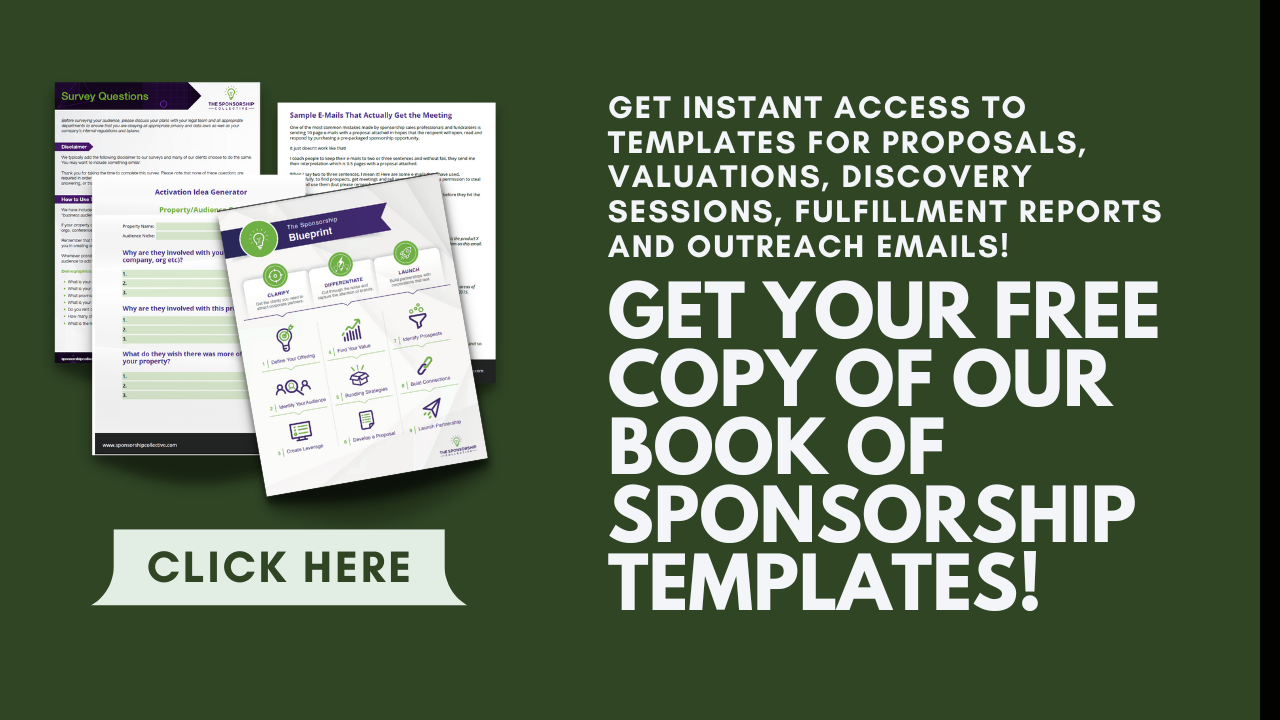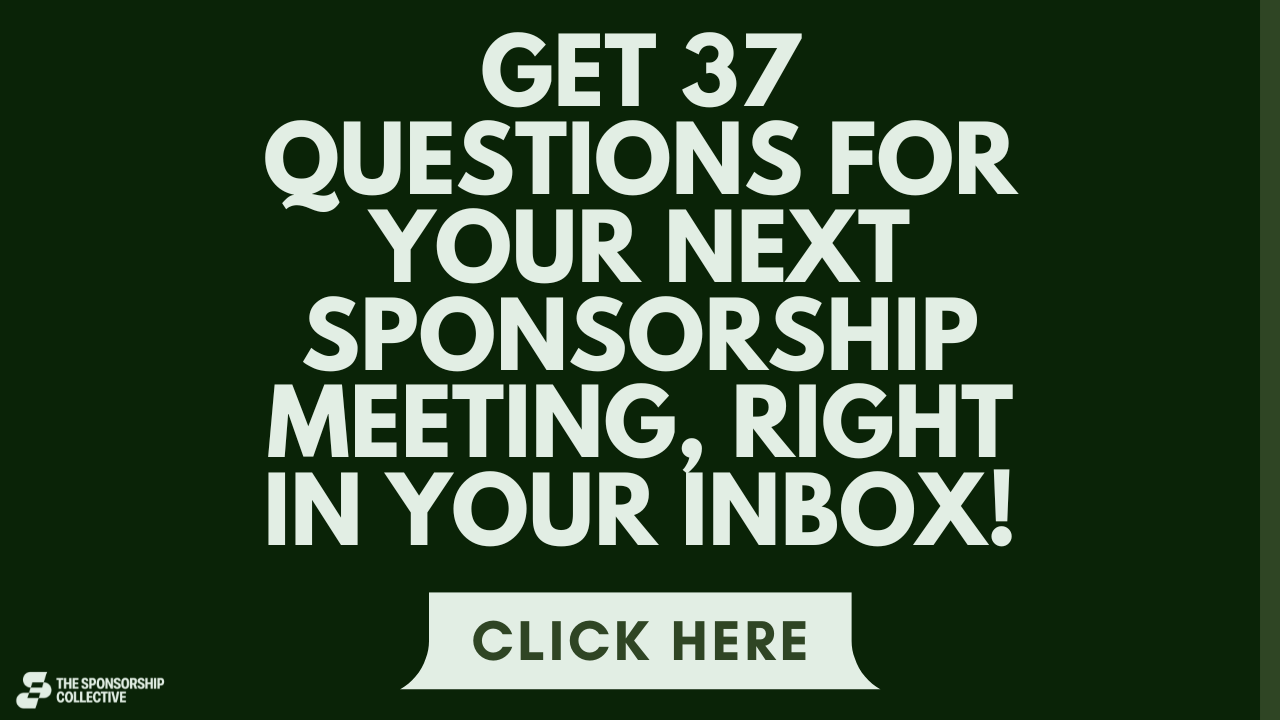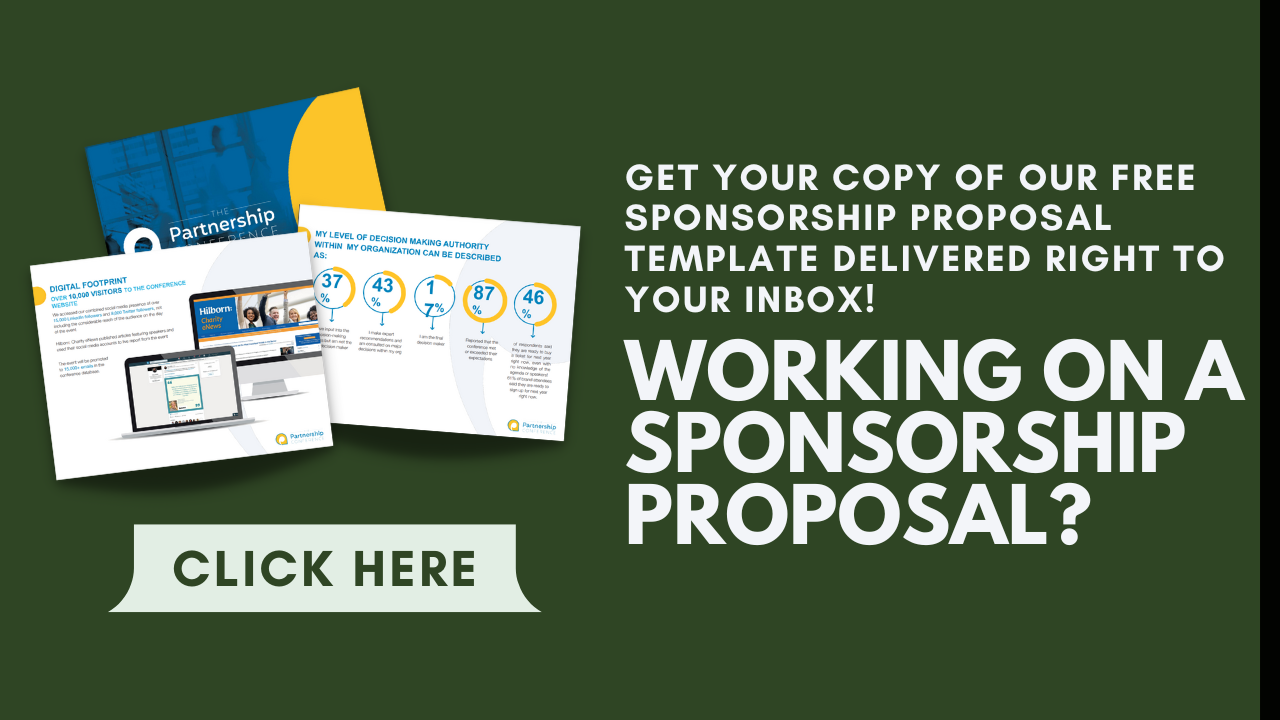I recently published a post about making your festival absolutely irresistible to sponsors, magnetic even. What if you have a program or opportunity outside the festival sphere but still want to draw in sponsors like a magnet?
Today’s post is for you. Join me as I present my best guidance toward building an undeniably magnetic presence that will increase your sponsorship opportunities.
Let’s get started.
How to Become a Sponsorship Magnet in 9 Steps
Step 1 – Stop Chasing!
Even though the relationship with your sponsor is strictly professional, I often liken sponsorship to romantic relationships because it’s a relatable way to understand some sponsorship concepts.
For instance, chasing. If you want to date someone, you don’t go obviously chasing them, right? It gives off desperate rather than romantic vibes. It mostly comes across as creepy.
Instead of luring in the person you wanted to date, all you do is repel them. That’s the opposite of how magnets work.
Well, guess what? In sponsorship, chasing is just as frowned upon. You also come across as desperate, not desperate for a date in this case, but desperate for money.
Sponsors can smell you coming from a mile away and will give you a wide berth. That doesn’t feel great for you. After a while, begging for money and being completely ignored begins to wear on you.
You might feel like giving up on your sponsorship dreams because nothing is working out.
Things could work out if you gave the chasing a rest. Just like how when you’re single and dating, you tend to attract more people by being chill, the same rule applies in sponsorship.

Sponsors react like most people when you chase them – they run! And you often never see or hear from them again.
Now, chasing doesn’t always have to mean banging down someone’s door or flooding their inbox with 20 messages a day.
You can chase in all sorts of ways in sponsorship, so let me know if any of these are something you’re doing (whether you mean to or not!).
- You send 2,000-word emails as an introductory message explaining all the reasons the sponsor should give you money.
- You use inappropriate channels like LinkedIn to connect, writing a message about how you want money because you know they work for the sponsorship division at a company.
- Sending unsolicited sponsorship packages at any point during the sponsorship process.
- Sending sales material that no one asked for.
These methods don’t work, yet I see so many sponsorship seekers continually doing them anyway because, in their minds, they’re out of other options.
I’ve mentioned my sponsor friend before, but I want to do it again. She’s part of a company that’s regularly offers sponsorship deals. She told me one day that she receives over 10,000 unsolicited sponsorship packages a month.
That’s right, per month!
She doesn’t read a single one of them because her company doesn’t want them.
I hope I’m making my point clear in all this. Quit chasing!
Step 2 – Stop Copying Everyone Else
Chasing takes a lot of time and energy you could put to better use in growing your sponsorship efforts.
However, that doesn’t mean you should take the easy way out and copy what everyone else is doing.
I know what puts sponsorship seekers in this position. You’ve tried multiple things without success (usually just chasing), and you see another sponsorship seeker with gold, silver, and bronze tiers who has more success than you.
This tells you to do what they’re doing because clearly what they’re doing works and what you’re doing doesn’t.
However, what is “more success” in this case? Just because a sponsor replies to them doesn’t mean the sponsor is gladly handing over all the cash they have to that sponsorship seeker.
A sponsorship seeker isn’t successful unless and until they close a deal.
You will likely waste even more time and effort emulating what other sponsorship seekers do and end up with the exact same outcome. You’re empty-handed.
If you have an event of any kind coming up or a time-sensitive program or opportunity, you will begin stressing out because time is ticking away and you’re still no closer to securing a sponsorship deal.
I’m not saying that you have to carve out your own sponsorship corner, but you must be willing to go your own way. If you want high-value sponsorship, which only few people achieve, you can’t do what the majority of people do.
If you do, you’ll get the majority of the results, which is low-value sponsorship, if any sponsorship at all.
Step 3 – Know Your Audience
How do you separate yourself from the majority of sponsorship seekers? That’s simple. Know your audience.
Okay, so it sounds simple, as many sponsorship seekers assume they know their audience, but it turns out they’re barely scratching the surface.
If you’re only dividing your audience into broad segments, you don’t really know them.
Do you know the brands that have advertised to them within the last six months? Do you know three other events they’ve attended in the last year besides yours? (Presuming you do events, of course). Do you know their favorite brands, the ones they told you themselves they consume and use?
If you answered no to some of those questions–or worse–all those questions, you need to go back, issue your audience a more in-depth survey, and quiz them on these kinds of topics.
Sponsors always want more customers. It doesn’t matter if the sponsor company is a startup or a Fortune 500 company. Customers make the world go ‘round and pad a company’s bottom line.
If a company doesn’t have to go out of its way to find more customers because you’re serving them on a silver platter, why wouldn’t they jump for that? And jump they do, which benefits you, as you can finally capture a sponsor’s interest.
Now, having audience data is one thing, and clearly articulating it is another.
I recommend splitting your audience into niches or small, hyper-segmented groups according to very specific criteria.
I’m not talking about a city, but a borough or neighborhood in a city.

I mean more than occupation, but specific titles or income brackets.
This saves your sponsor time. Rather than spend thousands or tens of thousands of dollars on marketing and advertising materials, here’s you presenting all your audience segments. A sponsor must only review your segments to find which ones fit their target audience.
You could just find that sponsors will reach out to you if you can clearly convey your audience data!
Step 4 – Grow Your Audience
You don’t need an audience of 100 million people to succeed in sponsorship. You don’t even need an audience that’s half that size.
That said, the bigger your audience, the better.
While you won’t do this short-term, for longer-term sponsorship planning goals, you should aspire to grow your audience.
So how do you do that?
You need to start by getting your audience’s contact information. When a lead lands on your website, do you have lead magnets and opt-in forms ready to collect their name and email address? Is your website appealingly designed with mobile optimization and easy navigation?
Are you presenting high-value content to your leads once you have their contact information? Are you taking the time to identify their progress in the sales funnel and guiding them through the funnel to inspire a sale?
If you’re interested in long-term deals with a recurring sponsor, that sponsor will want to see audience growth. If you’re stagnating, you’re not really the hot property you claimed to be.
Step 5 – Use Case Studies
Another way to become a sponsorship magnet? You have to use case studies if you aren’t already.
Case studies are infinitely more valuable than grids or half the things you could include in your sponsorship proposal.
A case study is a real-life example of how you used your expertise to help a company in a bind.
The point of a case study is to get the sponsor to envision themselves in your partner’s shoes. If you can help your partner in such a major way, then surely, you can deliver similar results to a sponsor.
Case studies build trust not only in your sponsors but your audience as well. That’s why you see case studies used so often in marketing campaigns. They’re an excellent form of social proof.
A case study should be rife with numbers, data, and figures that paint just how transformative your services were.
What if you don’t have any case studies because you don’t have a successful sponsorship track record? Well, it’s time to begin presenting higher-level sponsorship opportunities that are worth talking about.
In the meantime, as you aspire to improve the sponsorship relationships you’re attracting, I implore you to look into other successful business partnerships you’ve had and write a case study about them.
As soon as you have a great sponsorship relationship, produce a new case study that will be more relatable to future sponsors.
Step 6 – Find Media Partners
There’s nothing like a media partnership to make you a sponsorship magnet.
Here’s a little story for you. I once had a client who was looking for a new title sponsor. His search had been ongoing for years.
After a valuation of his sponsorship property, I determined the value was less than $80,000, which is low for title sponsorship.
Then he secured a media partner. I redid the valuation at this point, and now his was a multi-million-dollar property.
So what changed? Was it really just the media partner? Yes, it was. Well, that and good audience data and some case studies.
My client also found that once he had the media partner, rather than him soliciting sponsors all the time, they began calling him asking to do business.
Imagine that! My client had truly become a sponsorship magnet.
You too can find media partners and transform your sponsorship program. How do you get started?
I recommend researching media outlets in your city or town. You don’t want to choose just any media outlet, but one that matches the tone of your event, program, or opportunity and who would be willing to cover your event.
Once you decide which media partner to work with, you need to find a contact within the media company. I recommend digging through your long list of former and past vendors and partners and seeing if they can connect you.
Think of a media partnership like a sponsorship deal. You’re not asking for something and expecting to give nothing in return.
You’ll have to talk to your media partner and discuss their needs and challenges, sort of like an informal discovery session.
Securing even one media partner might take more time in addition to the time you’re spending trying to procure sponsorship, but the results are worth it.
Step 7 – Do What You’ll Say
No one likes or falls for aggrandized sales spiels anymore. They can recognize when something sounds too good to be true and will turn down the offer.
When you tell a sponsor you can make something happen, they expect you to make it happen. Remember, it’s not just your sponsor who’s counting on you but your audience too.
If you don’t live up to expectations for your sponsor, that impacts the success of your event, program, or opportunity, the very one that audiences paid fair money to attend.
It’s easy to get caught up in false promises, especially if you’re eager to land a sponsor. Telling a sponsor what you think they want to hear in the moment will come back to bite you later.
You must be honest. It’s okay if you can’t deliver the moon and stars. If what you deliver is cool by comparison and you deliver it in full as you said, that will go a long way.
You’ll build and maintain trust with that sponsor and deepen audience relationships. Your sponsor will be more willing to work together again or recommend other available sponsors.
Step 8 – Produce a Fulfillment Report
Speaking of working together again with a sponsor, that’s a lot likelier to happen if you send them a fulfillment or post-event report.
In the report, you’ll showcase photos of your event, program, or opportunity and include all the deliverables you promised and their delivery status.
When you finish the report, you can send it to the sponsor and open up dialog about resuming your relationship next year.

A fulfillment report makes you a magnet for your existing sponsors. Once they’re reminded of what you can do, and you bring something new to the table by expanding on your original offer, most sponsors will be happy to pen a longer-term deal.
You can enjoy consistent funding for your event or opportunity over the next several years, and perhaps you even increase your sponsorship earnings.
It’s always easier, less costly, and less time-consuming to work with the same sponsor than it is to seek a new one.
Step 9 – Use Social Media Wisely
Social media is your friend on your quest to becoming a sponsorship magnet, but it all depends on how you use it.
If you’re only using social media to talk about how much you need sponsorship dollars, that’s not going to do it.
Instead, you should post about your high-quality assets and activations, rich audience data, and the other unique opportunities you bring. Supplement your posts with videos, photos, and case studies.
Sponsors will find this data, and it will whet their appetite.
Conclusion
Following the nine steps above proves you’re a thought leader in the sponsorship sphere. You show that you know your audience; you display your social proof. You understand how sponsorship works, and you deliver on what you say you will.
You will attract sponsors. You won’t have to send unsolicited sponsorship packages or beg for dollars. You’ll make sponsorship happen!
- About the Author
- Latest Posts
Chris Baylis is the Founder and Editor-in-Chief of The Sponsorship Collective.
After spending several years in the field as a sponsorship professional and consultant, Chris now spends his time working with clients to help them understand their audiences, build activations that sponsors want, apply market values to their assets and build strategies that drive sales.
Read More about Chris Baylis

